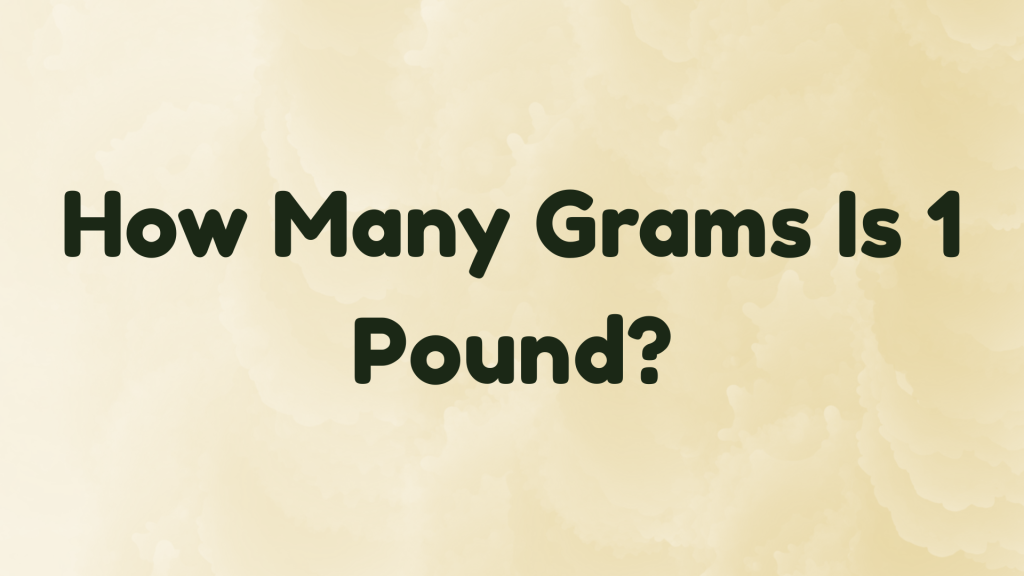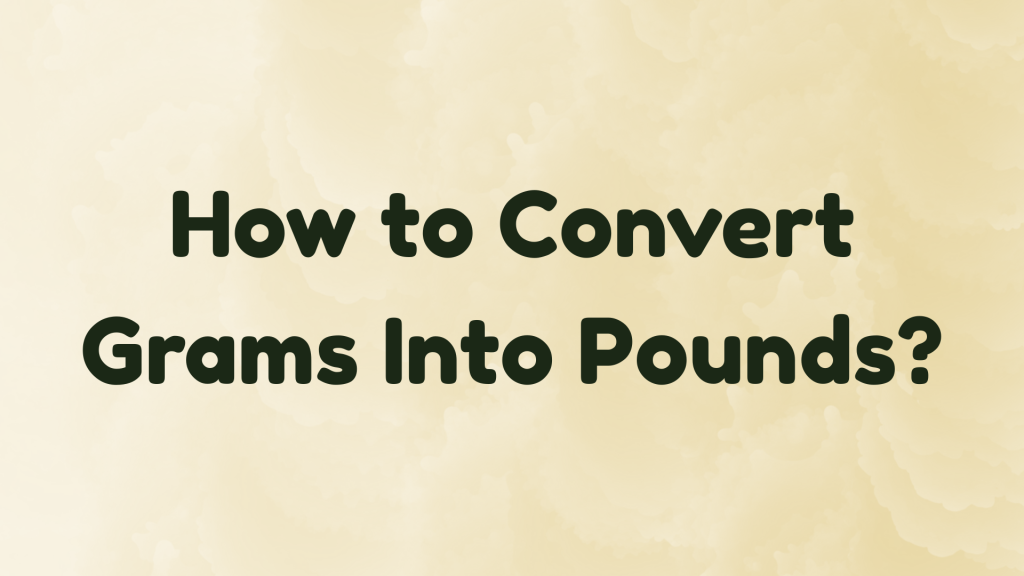Converting grams to pounds can seem tricky if you’re unfamiliar with metric and imperial systems, but it doesn’t have to be. Whether you’re dealing with an American recipe, reviewing food labels, or planning for health and fitness goals, knowing how to convert grams accurately can help you make informed decisions. This guide walks you through the basics with easy formulas, practical examples, and conversion factors to simplify the process.
How Many Grams Is 1 Pound?

To get started, let’s answer the most common question:
1 pound is equal to 453.592 grams.
This means that when you see something listed as 1 pound in a recipe, grocery label, or online converter, it’s the same as 453.592 grams. This unit of mass (gram) is used in the metric system, while the pound belongs to the imperial measuring systems used in the U.S. and a few other countries. Whether you’re dealing with grams of sugar, grams of flour, or grams of chicken, this conversion is essential when moving between measurement systems—especially if you’re working from international recipes or buying European products.
How to Convert Grams Into Pounds?

More to See: 10 Common Things That Are 52 Inches Long
To convert grams into pounds, you’ll need to understand the relationship between grams and pounds. This is especially useful if you’re trying to manage your daily health, meal prep, or macro intake for fitness goals.
Here’s a quick how-to:
- Identify the grams figure you want to convert.
- Use the conversion formula or a grams to pounds converter.
- If you’re doing it manually, divide the grams by 453.592.
For example:
- 1000 grams ÷ 453.592 = 2.2046 pounds
Using this simple math, you can convert any weight in grams to its weight in pounds form.
Convert Grams to Pounds
Need a quick reference? Here are some commonly used conversions:
| Grams | Pounds |
| 100g | 0.220 lb |
| 250g | 0.551 lb |
| 500g | 1.102 lb |
| 1000g | 2.204 lb |
| 2000g | 4.409 lb |
Whether you’re baking with dry ingredients, measuring larger quantities, or tracking food intake, these values help with accurate conversions. Also, there are online calculators and ingredient unit converter tools available to automate this process, especially if you’re dealing with grams for weight or following a conversion application for health reasons.
Formula for Converting Grams to Pounds
If you’re more of a DIY enthusiast or enjoy doing the mathematical process yourself, here’s the formula:
Pounds = Grams ÷ 453.592
This conversion formula is based on the standard unit of measurement for mass and weight. It works across customary systems and the imperial systems, ensuring correct accuracy even when using kitchen scales or a kitchen calculator.
Example: You want to convert 750 grams to pounds.
750 ÷ 453.592 = 1.653 lbs
This kind of calculation is vital when converting measurement in grams to measurement in pounds, particularly for international measurements or cooking instructions that vary by country.
Practical Tips for Converting Grams to Pounds
Here are some helpful, real-world tips to make your conversions even easier:
- Use digital scales: Many models allow you to switch between grams and pounds with the press of a button.
- Bookmark an online converter: For quick checks, grams to pounds conversion tools are invaluable and often free.
- Learn the base unit logic: In the metric system, the gram is the basic unit. In the imperial measurement system, the pound is the larger unit.
- Keep a conversion table handy: Especially useful in kitchens, meal prep areas, or for chefs in countries that use different systems of measurement.
- Cross-check with recipes: An American recipe might use pounds, but many European countries and international recipes list ingredients in grams.
- Measure precisely: When it comes to baking accuracy or intake for weight management, using the correct conversion factor ensures better results and supports your health journey.
Try This: How Far Is 100 Kilometers? 7 Real-World Comparisons (+Pics)
Final Thoughts
In conclusion, mastering the conversion from grams to pounds is an essential skill for anyone dealing with consumer products, recipes, or health objectives. Whether you’re using calculator tools, doing basic math, or relying on a grams to pounds converter, the process becomes second nature with just a little practice. From daily health to practical applications in the kitchen, converting grams to pounds allows for better planning, precise measurement, and ultimately, more informed decisions. So the next time you’re faced with a confusing label or an unfamiliar recipe, just remember: Divide grams by 453.592 — and you’re good to go!
Discover Your Best Fit with the SizeLoom Fit Guide.


